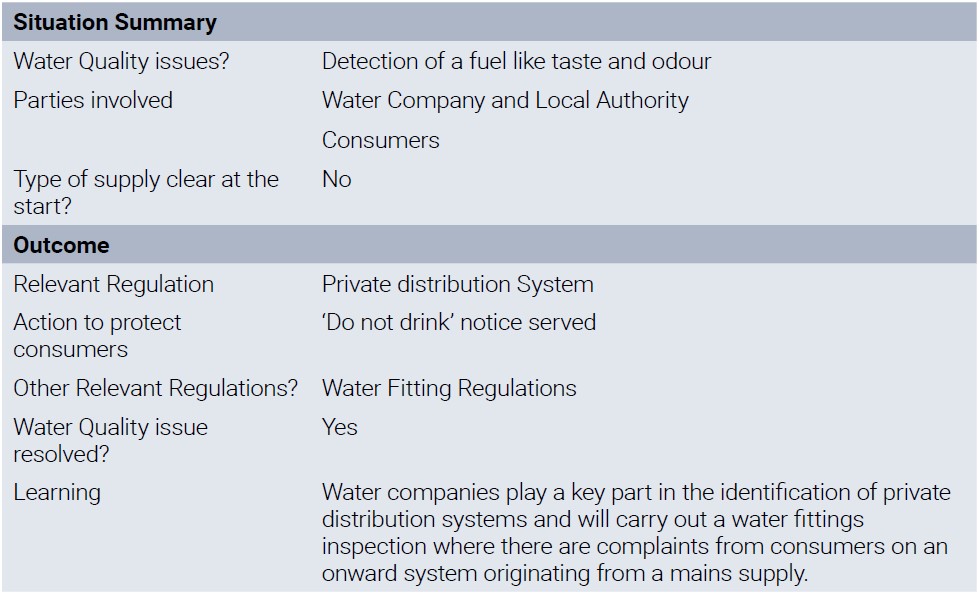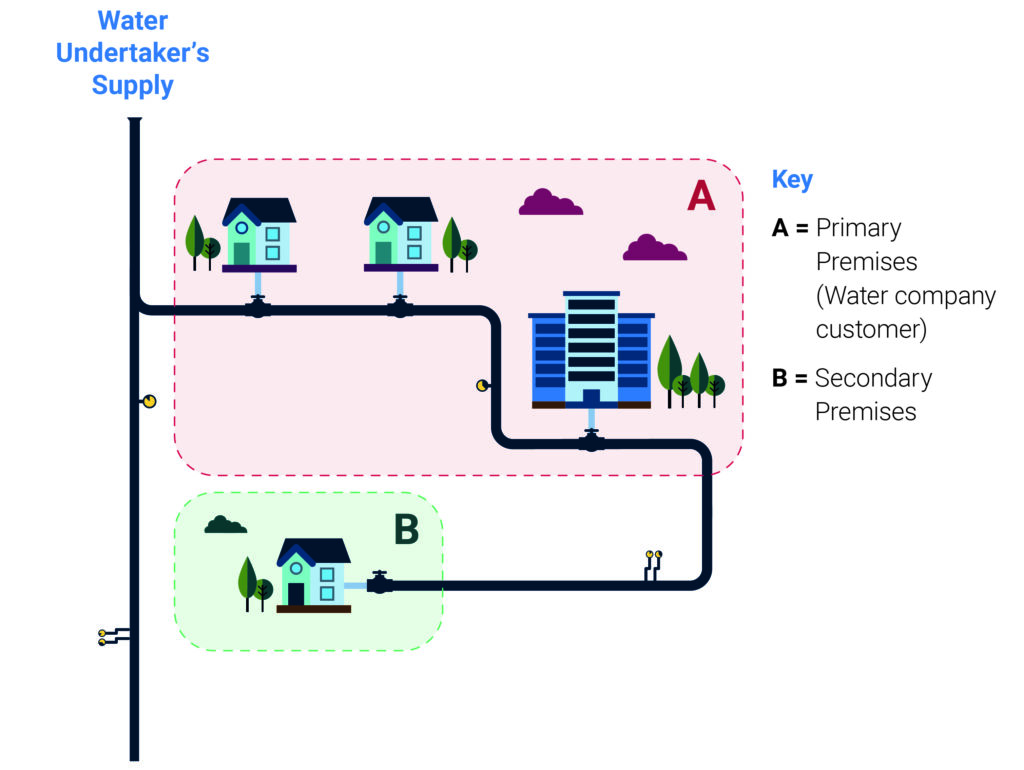Discovery of an onward distribution private water supply during CoViD-19 pandemic restrictions (Regulation 8)

Introduction
Private distribution supplies (regulation 8) are a water supply that is provided by a water company and then further distributed by the account holder to a third party on separately owned land, who are not water company customers. These were first included in the private water supplies regulations in 2010. Prior to this time such supplies were instead extensions of treated public supply systems, and whilst technically subject to the Water Supply (Water Fittings) Regulations 1999, they fell out of scope of both the public and private water supply regulatory requirements and were largely not visible to water companies and local authorities alike.

Over the last 10 years the Inspectorate has published several case studies that illustrate the ways in which such supplies become known. Most often however these come to light when consumers notice an abnormal aesthetic change to their drinking water quality, and report this to water companies. These consumers were found not to be registered customers of the water company, but instead paid for their water to or via others, or in some cases nobody at all.
In these cases, the consumers had usually already contacted those who they believed were responsible for the ongoing management and maintenance of the supply, but in the absence of any action, had contacted the water company to seek help for their safety concerns. Subject to their own policies and procedures, companies would then investigate to ensure that their customers were not being exposed to any ongoing or potential contamination risk.
As part of their investigations water companies are obliged under the Water Fittings Regulations 1999 to install suitable back flow protection to protect the public network where contraventions are identified, and deal with any identified illegal connections or undue consumption. At the same time, investigations offer an opportunity for the water company to check that their own billing arrangements are correct.
Collaboration between water companies and their local authority contacts is essential from the start of these events, not only to agree a strategy and approach in protecting public health as developments unfold, but to ensure that ongoing regulatory responsibilities are captured and agreed by the parties concerned. Where an onward supply arrangement is identified, the local authority then has a regulatory obligation to add the supply to its record.
This case study provides an example of where this was shown to be the case. On this occasion, investigations were curtailed due to the Government restrictions that were in place at the time to contain the spread of CoVid-19 during the pandemic beginning in 2020.
In September 2020, The Inspectorate was notified by a water company of an event concerning consumers reporting a fuel like taste and odour to their drinking water. These consumers were all residents of a static home site in Derbyshire. The water company found that the site comprised 14 static homes located on a single parcel of privately owned land which were not each being fed directly from a water company main, but via a supply pipe from a nearby factory cited on land in separate ownership from the static homes.
The water company issued precautionary advice not to drink the water to both the static home occupiers and the factory workers while they investigated. A sampling survey was undertaken to assess the water quality at the affected properties, and the wider distribution network.
Due to the guidance regarding the pandemic at the time, consumers were provided with sample bottles to fill themselves, instead of a Quality Technician (QT) entering the properties. As the samples were not collected by a QT, they were subjected to taste and microbiology analysis. This found a low-level organic compound identified in one GCMS sample.
A water fittings inspection of the supply arrangements across both sites was carried out by the water company. This revealed that whilst the communication pipe leading up to the factory was made of copper and the factory’s supply pipe was black alkathene, both of which would provide protection against permeation of chemicals and hydrocarbons. The supply pipe which was feeding the static homes was however found to be MDPE. MDPE is the commonly used “blue” polyethylene pipe used for water supply. This type of pipe does not prevent hydrocarbons such as oil, petrol or diesel permeating the pipe and tainting the drinking water. The discovery of a leaking stop tap submerged in a black oily substance behind the static home of the consumer who had originally alerted the water company to the issue, confirmed the ground contamination by oil. The remedy for such a situation is to excavate the stop tap and the blue pipe, and to replace this with a blue barrier pipe which contains a central metallic lining within the pipe to prevent the permeation of contaminants.
Learning
Water companies play a key part in the identification of private distribution systems and will carry out a water fittings inspection where there are complaints from consumers supplied by these private water supplies. Local Authorities are encouraged to request the help of the public suppliers in such circumstances as water fittings inspectors will often quickly locate the source to a problem in a local network. Conversely, water companies are encouraged to notify Local Authorities when such a circumstance arises and offer the help of their expertise.
